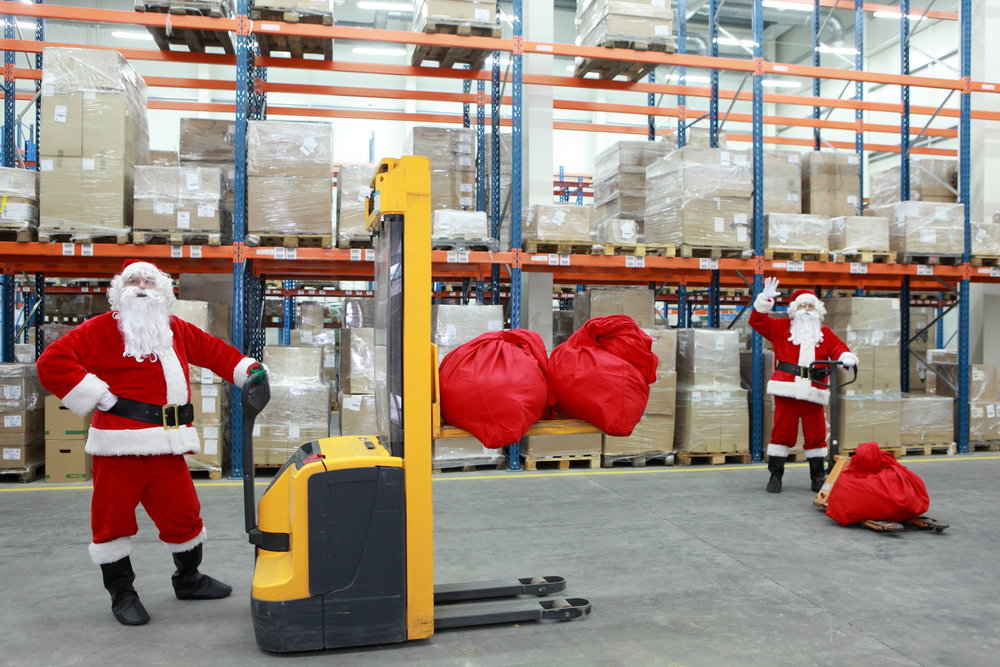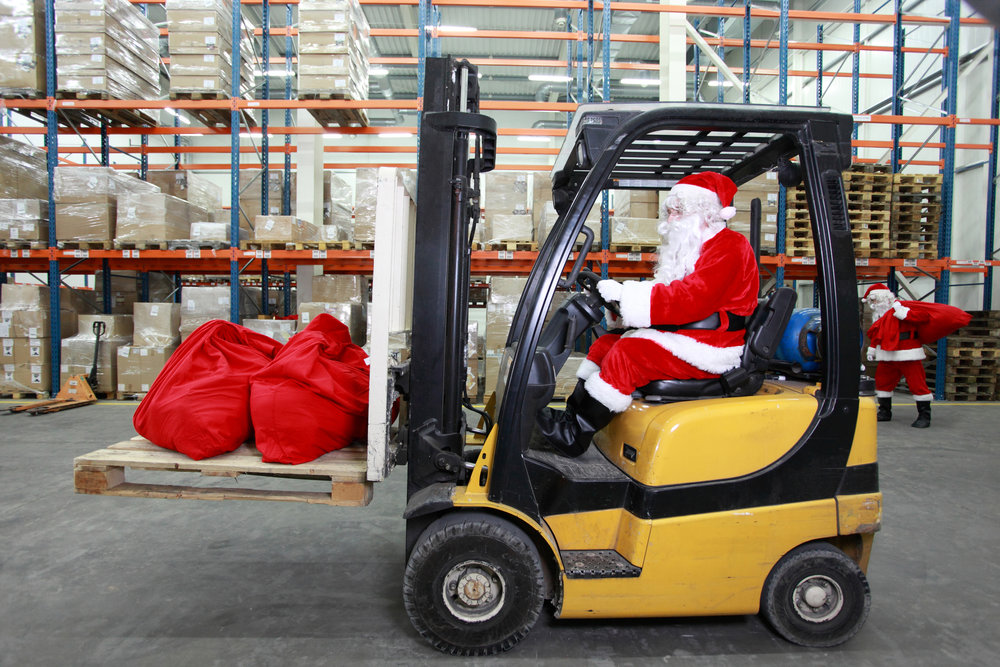Wasp Barcode Technologies: The Barcode Solution People
How to Prepare Your Warehouse For the Holiday Rush
 Think about all the shopping you do in the winter months to have gifts ready for the holiday rush. Multiply those purchases by the millions of people who are doing the same across the country and you’ll see why the holidays are so important for retailers. Holiday sales can account for more than 20 percent of retailers’ total earnings for the entire year, which makes it a make-or-break season.
Think about all the shopping you do in the winter months to have gifts ready for the holiday rush. Multiply those purchases by the millions of people who are doing the same across the country and you’ll see why the holidays are so important for retailers. Holiday sales can account for more than 20 percent of retailers’ total earnings for the entire year, which makes it a make-or-break season.
The unsung hero during the holiday rush are the warehouses, which receive, store and ship countless items, particularly during November and December of each year. While consumers may only consider the Amazon homepage or the Target check-out counter, businesses know that the warehouse is what makes stocking and resupplying their inventory possible.
[Tweet "The unsung hero during the holiday rush are the warehouses."]
As impressively massive and complex as many retailing warehouses seem, they are sometimes still unprepared for the crush of orders that come around this time. Even Amazon missed its earnings expectations in Q4 of 2015 because of increased fulfillment costs. Too many merchants relied on Amazon to store and ship their products, which caused the retail behemoth to resort to last-resort, high-cost options for sending out orders in time.
Similarly, UPS dropped the ball two holiday rushes ago, when an overwhelming number of online orders led to missed deliveries. An already overworked staff had to load an unexpected surge of last minute orders onto an insufficient air fleet, which created delays and broken promises.

Customers have enough options in the online shopping era to turn away completely from businesses that don’t complete their orders on time or for a low enough price. Therefore it’s imperative that warehouses, and the merchants that utilize them, prepare for the holiday rush in several key ways in order to avoid shelling out major money to cover mistakes or losing customers altogether.
Ensure product availability with warehouse and inventory management
One of the most brutal ways to lose a customer’s business is to promise or even promote the availability of an item, only to find that the inventory count in your warehouse was wrong, the product was sold out, or the stock is outdated, for example. How does this happen?
[su_divider top="no" size="2"]
[su_divider top="no" size="2"]
Simple: Warehouses that use a manual process to account for inventory will find their records to be incorrect at some point along the supply chain. Human error is a common source of this mishap, but try telling that to a customer who wants this particular gift before Christmas. Automated inventory management systems provide real-time visibility, reducing the issue of lost products to virtual nonexistence.
Raise warehouse storage fees to prevent overstocking
If you’ve seen photos of Amazon’s massive warehouses, you may find this hard to believe, but even they have had issues with overstocked storage during the 2015 holiday rush. Amazon will store and ship third-party merchant goods through their “Fulfillment by Amazon” platform, but too many companies took advantage of the program last year and Amazon was overrun.
This year, Amazon is raising warehouse storage fees for November and December, with the goal of encouraging merchants only to store items that they are confident will sell during this critical time period. The carrying costs of inventory, keeping the warehouses secure, safe, in good condition and working at full efficiency, are too high to allow for an excess of inventory sent to warehouses “just in case” they’re needed.
While this point may run counter to the idea of always having enough inventory in stock to meet customer demand, quality inventory management software helps businesses calculate how much inventory they’ll need to satisfy demand without overburdening the warehouses. Inventory turnover ratio is, for this reason, a key metric to success.
In order to make this change more palatable, warehouses can lower storage fees in October or January, or lowering weight fees during the holiday rush.

Understand the limitations of the labor force
If your answer to an increasing number of orders during the holiday rush is to simply increase the number of hours your warehouse employees work, you’re going to have a problem. Spend extra training time on preparing your existing workers for the incoming crush, and consider hiring skilled temporary workers to help handle the increased workload. Last year’s sales and shipping figures should tell you what to expect this year, keeping in mind that holiday sales through e-commerce are growing every year, and that 2016 figures to be even busier than the epic rush of 2015.
If hiring new workers or spending money on overtime for those already hired sounds expensive, consider the costs of having to buy back customers with gift cards, or ship their products using expensive last minute means. It’s better to plan ahead than to catch up from behind.
Use barcode technology to reorganize your warehouse to run more efficiently
Amazingly, the simple barcode -- yes, the square pattern of lines and spaces that are scanned with everything from a mobile computer to a smartphone -- is what powers the incredibly complex “chaotic storage” system that Amazon utilizes.
While common sense might tell you that grouping items together based on, say, what they are (teddy bears with teddy bears, televisions with televisions, food with food) is the most efficient way to run a warehouse. Amazon has found that by applying barcodes to shelves, they can place items anywhere, alongside anything, and find it again easily by scanning the corresponding barcode on their end.
Plus, a centralized database tells workers the most efficient route through the warehouse to complete an order with the help of barcode-scanned information. This is another crucial way warehouses can increase the effectiveness of their workforce without asking them to work insane hours or hire multitudes of part-time help. In a time frame where every day, hour and even minute matters when it comes to fulfilling orders, a more efficient way to get an item from the shelf into a box and out the door can mean the difference between success and failure.
For the future: Begin researching emerging technologies
While some businesses are still lagging behind 21st century technology such as mobile commerce and manual asset management, others are ahead of the game and thinking about the future. Some major retailers are already looking into the viability of using drones to make deliveries, in an effort to circumvent the nation’s already overtaxed infrastructure. Begin researching emerging trends and your warehouse will be ahead of the curve when the time comes to make the switch for real.
Holiday shopping is practically an industry in-and-of-itself, with billions of dollars worth of sales done in a short window. And as shoppers become increasingly tech-savvy (omnishoppers are a holiday shopping pattern to watch out for), use of that window needs to be as efficient, fast and cost-effective as possible. Warehouses that are prepared for the holiday rush will set themselves up for success in the winter and throughout the rest of the year, and perhaps into the future as well.





